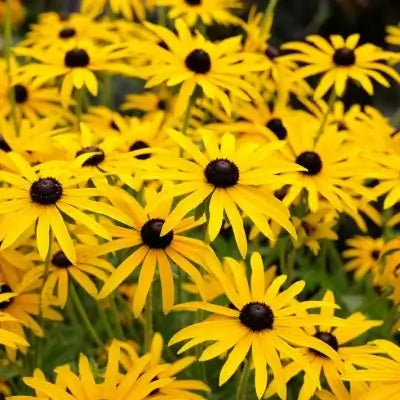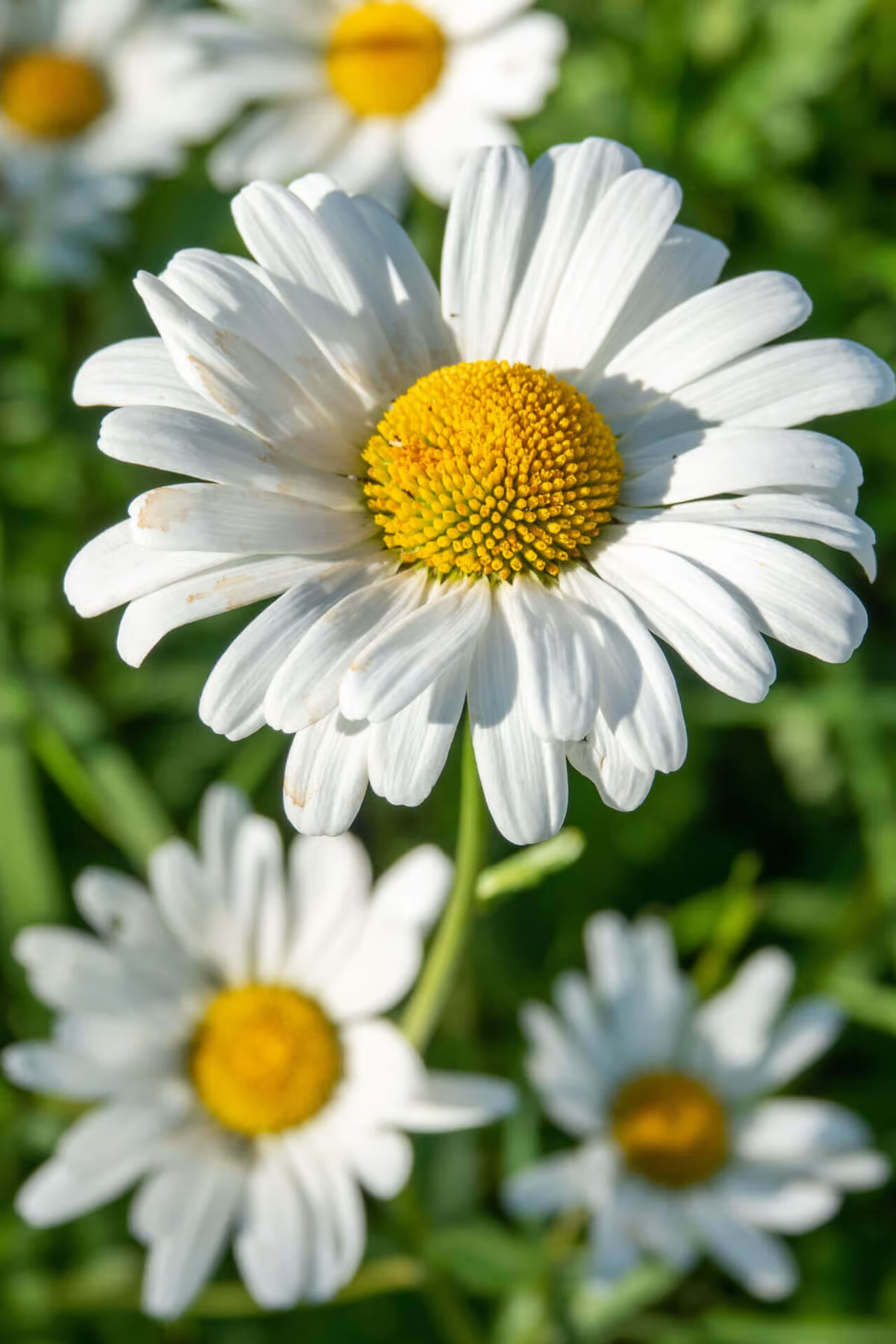
perennial plants for sales
Easy to grow and maintain
Long-lasting blooms enhance garden color
Drought-tolerant, reducing water needs
Thrives in
ZONE 3ZONE 4ZONE 5ZONE 6ZONE 7ZONE 8ZONE 9Planting Season:
Year-RoundWhen you add one plant to cart, it automatically adds the second one free on Bogo deals.
Oxeye Daisy is a perennial wildflower with white, daisy-like flowers featuring yellow centers and deeply lobed leaves, often found in meadows and fields, adding charm to natural landscapes. It's known for its radiant white petals and sunny yellow center. It is a charming perennial with numerous landscaping benefits. Its innate qualities make it a popular choice among gardeners and landscapers alike.
It blooms single or in clusters from May through September, can reach a height of three feet on their tall, thick individual stems. The flowers they produce are multiple flowers in one. 15 to 35 white (ray flower) petals surround the flower head, which consists of 400 to 500 yellow disk flowers. This flower's distinctive feature is its enormous, spherical blossom head. Each bloom can reach up to three inches in diameter. When full-grown, these plants can get up to two feet wide. Once established, you'll likely always have daisies since they are so good at self-seeding.
This plant has dark green, spoon-shaped leaves that taper into narrow, serrated ones as they grow up the stem. The enormous leaves appear around the plant's base; they are about six inches long and two inches wide and have as many as 15 lobed edges. The top leaves are thin, alternately placed, and sometimes clasp against the stem. These clasping leaves, which are one to four inches long, also have lobed edges. Typically, a leaf's number of teeth or lobed edges increases as it grows higher on the stalk.
The plant is the most significant type. Pollen and nectar found in these flowers are essential for the survival of several pollinating insects, such as moths, beetles, butterflies, hoverflies, and beetles. The male disk flowers emit a ring of yellow pollen around the periphery, while the many tiny flowers that compose the flower's yellow center contain nectar. Adding these flowers to your yard or garden is a perfect way to lure pollinators and increase their biodiversity.
These plants are magnets for good bugs, such as pollen-feeding beetles, which eat nasty bugs like aphids. Animals like cattle stay away from areas with these flowers because they irritate the wildlife's lips, nostrils, and legs. These characteristics make the plant an excellent form of pest and wildlife control.
It is a perennial with bright white petals that surround a bright yellow center. Its simple but neat outlook comes in handy when planting it in a wildflower garden.
They grow well in an area that receives full sun and desire well-drained soil; therefore, they can be grown in gardens, meadows, and roadsides. The plant is hardy and can tolerate a variety of environments like sand or clay.
These plants are very easy to grow and are great for those trying gardening for the first time. They don't demand much attention once planted and, in most cases, reseed themselves to produce flowers year after year.
Its flowers attract bees, butterflies, and other insects. Local ecosystems are conserved through this, and it also adds aesthetic value to the compound or yard.
Oxeye Daisy bloom from spring through early summer and make gardens full of their eye-popping flowers for weeks. Removing spent blooms ensures that a plant continues to bloom and helps to extend the flowering season.

Bloom Season
Summer
Bloom/Foliage Color
White
Height at Maturity
Under 12"
Care
Oxeye Daisy thrives in well-drained soil and is drought-tolerant once established. Water regularly during dry spells and deadhead spent blooms to encourage continuous flowering. Cut back in late fall to maintain shape and prevent self-seeding.
Plant Reproduction
Oxeye Daisy can spread quickly by seed and vegetatively.
Shipping date depends on the date displayed and chosen when you order from the product's page.
We only accept returns on plants verified dead. If you think your plants have died, we offer a 1 year warranty, please use use this File a Claim Link to verify dead plants and start with return warranty process.





Bright Blooms:
Classic white petals with a sunny center add vibrant color to your garden.
Easy Care:
Low-maintenance and adaptable to various soil types.
Pollinator-Friendly:
Attracts bees and butterflies to your garden.
Versatile: Great for beds, borders, and wildflower gardens.
Caring Tips
Each box contains detailed care instructions and information about your product. But here's the basics.
Care Tips
Oxeye Daisy thrives in well-drained soil and is drought-tolerant once established. Water regularly during dry spells and deadhead spent blooms to encourage continuous flowering. Cut back in late fall to maintain shape and prevent self-seeding.
Light Requirements
Oxeye Daisy (Leucanthemum vulgare) thrives in full sun, obtaining at least 6 hours of direct sunlight daily. While it can endure partial shade, full sun encourages the best growth and abundant blooming.
Hardy Planting Zones
3 • 4 • 5 • 6 • 7 • 8 • 9
How often should I water my plants?
How do I know if my plant is getting too much or too little sunlight?
What should I do to prepare my plants for winter?
What are the signs that my plant needs fertilizing?
How can I prevent pests from damaging my plants?
How do I choose the right plant for my climate zone?